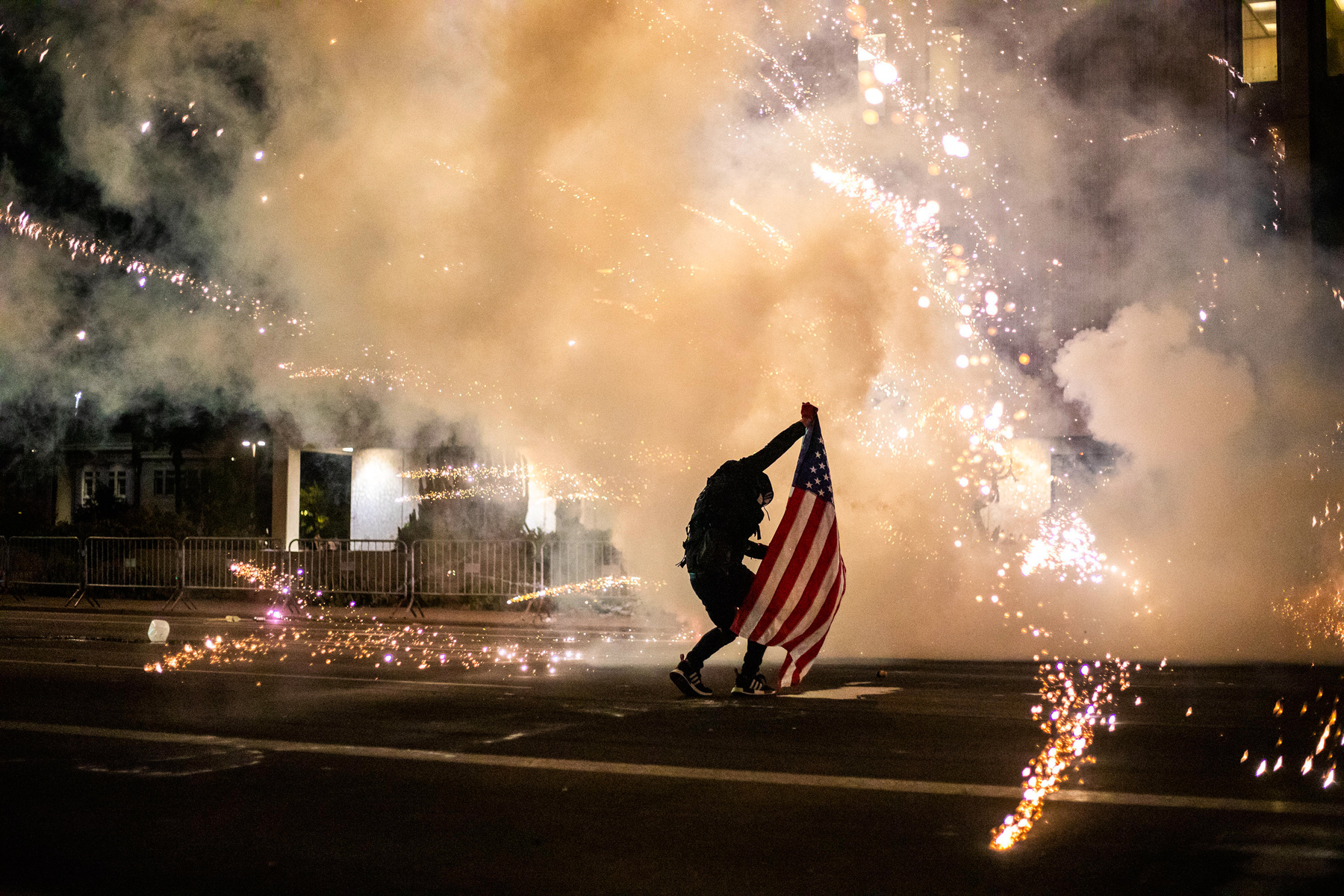Americans nationwide have expressed anger and frustration over the continued deaths of black men at the hands of police, particularly the May 25 death of George Floyd, 46, in Minneapolis. But local outrage also has focused on Dion Johnson, 28, who was shot to death the same day by an Arizona Department of Public Safety officer who had found him asleep in his car in north Phoenix.
Phoenix Mayor Kate Gallego, noting that issues involving race and police have been ignored for years, said the majority of people who gathered in Phoenix to grieve and protest did so peacefully. But as protests turned violent, police used tear gas, smoke bombs, flash and concussion grenades, pepper spray and rubber bullets on demonstrators each night.

May 28:
On Thursday, Protesters gathered in downtown Phoenix streets for hours before police declared it an unlawful assembly. Hundreds remained on the streets at the time and police arrested eight people.
May 29:
On Friday evening, protesters held a vigil for Dion Johnson, which turned into a march to Phoenix police headquarters. The DPS officer who shot Johnson was not equipped with a body or dash camera, and Johnson’s family has asked for more information about his death. Protesters later damaged 18 properties – shattering doors and windows, spraying graffiti on walls, according to police.
May 30:
On Saturday, Phoenix officials warned protesters that police would take swift action if demonstrations turned criminal. Protests remained largely peaceful until nightfall, when police fired rubber bullets and tear gas into the crowd and arrested 114 people.

May 31:
On Sunday, Gov. Doug Ducey issued a statewide declaration of emergency, setting an 8 p.m. to 5 a.m. curfew that started that day and runs until June 8. Phoenix police arrested hundreds of people Sunday night.
June 1:
Monday’s demonstration ended peacefully soon after the 8 p.m. curfew took effect. Hundreds remained on the streets, however, and police arrested eight people.
June 2
Waves of protests, rolling across Arizona in the last several days like a tributary in a national unleashing of fury and grief over the deaths of black people at the hands of police, kept flowing on Tuesday night.
Hundreds gathered in downtown Phoenix in what has now become a familiar place — Phoenix police headquarters, according to local media reports.
State Rep. Reginald Bolding, speaking of the family of Dion Johnson, who was killed in a Memorial Day encounter with an Arizona state trooper, said law enforcement needs training, accountability and transparency to move forward from Johnson’s death. He died the same day as George Floyd, whose death after Minnesota police officers knelt on his back and neck ignited protests in Arizona and around the country.
Johnson’s last minutes aren’t known because Department of Public Safety troopers don’t yet wear body cams. But in Minnesota, video from onlookers, many of them pleading with police to stop, captured the 8 minutes and 46 seconds of pressure placed on Floyd’s back and neck on May 25.
Those minutes have led to days of largely peaceful protests, clashes with police, looting and vandalizing businesses in downtown Phoenix and an upscale mall in Scottsdale, leading to scenes of police kneeling before protesters, a statewide curfew, more protests by hundreds and much debated scenes of police kneeling before protesters.
The protests also come a few months after the Phoenix City Council backed reforms at City Hall that call for the creation of an entire agency for civilian oversight of police and a community outreach system. A viral video led to that decision as well.
Gov. Doug Ducey declared a statewide emergency and called for a curfew after the weekend looting and vandalism of Scottsdale Fashion Square, a magnet for high-end shoppers in a city where the median income is $85,000. According to media reports, some people decided to take their anger to an affluent area.




